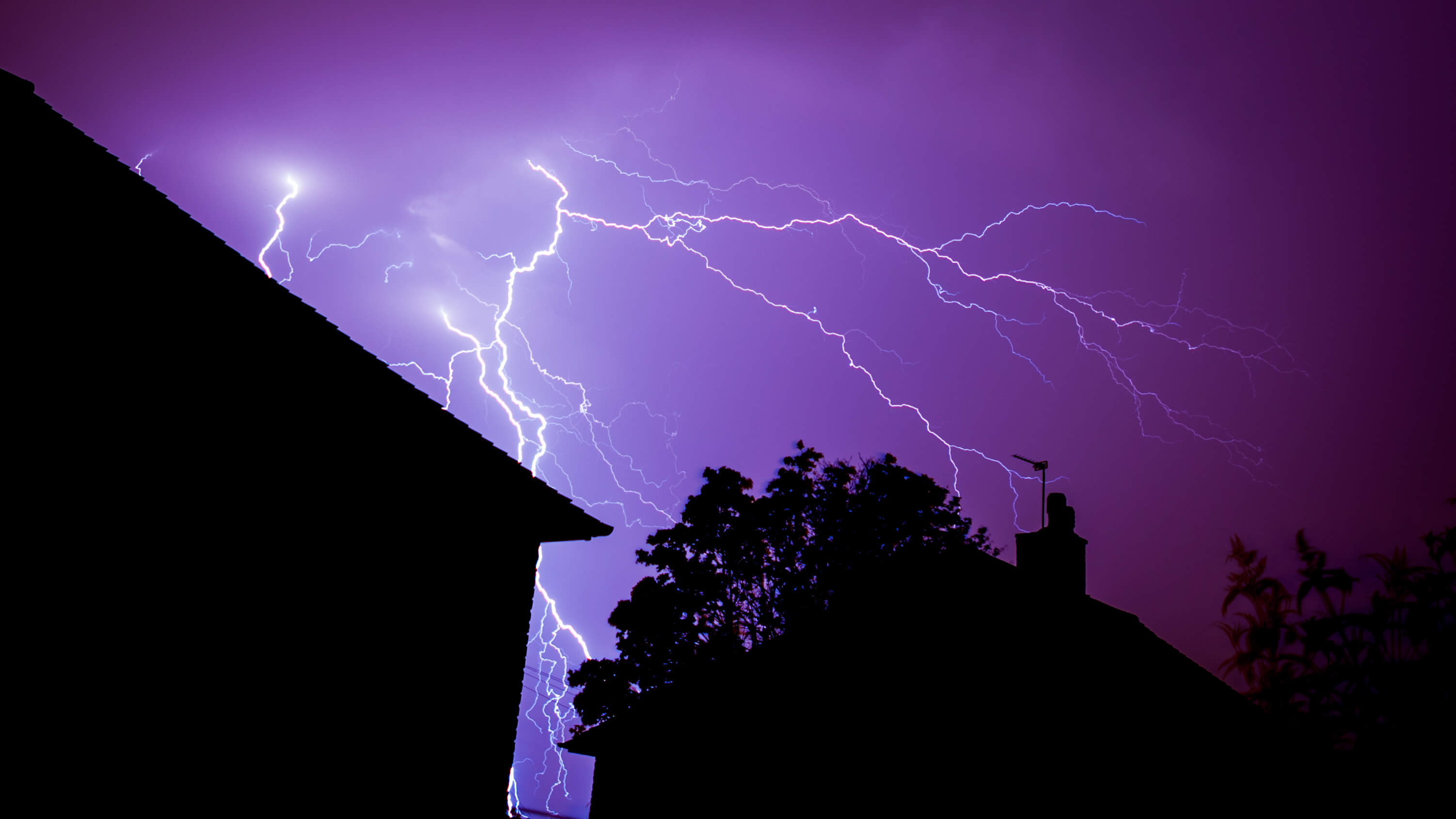
Three minutes of exposure can cause damage to the inner-ear resulting in permanent noise-induced hearing loss. Thunderclaps register at approximately 120 decibels.

Thunder is rarely heard at distances of 15 miles or over. The lightning will be approximately one mile away for every five seconds.
You can estimate how far away a bolt of lightning is by timing how many seconds later you hear the thunderclap. However, it is usually only audible afterwards because light travels faster than sound. What is thunder? A thunderclap is the audible energy discharge from a lightning flash. Which are bigger odds than winning the Lottery! Here in the UK there is around a one in three million chance of being struck by lightning. They are most frequent in tropical rainforests where they can be almost daily occurrences. Worldwide there are around 16 million thunderstorms each year. Lightning is an atmospheric discharge which usually occurs during a rain storm but also frequently during volcanic eruptions. Electrical storms are formed when dense cold air overlies warm moist air. Cars can be swept away in just two feet of moving water. Remember “Turn Around, Don’t Drown!” Don’t drive through flooded roads. If phone lines are down, use social media or texting to let others know you are OK. Make sure your carbon monoxide detectors are working as it is a silent, odorless, killer. Use generators and grills outside because their fumes contain carbon monoxide. Report power outages to your utility company. If your power is out, follow our power outage safety tips. If your home or property is damaged, take photos or videos to document your damage, and contact your insurance company. If you believe there is a gas leak, go outdoors immediately, and do not turn electrical switches or appliances on or off. Stay out of damaged buildings and areas until authorities deem them safe. Always assume a downed power line is live. Call 2-1-1 to obtain shelter locations and other disaster information. Call 9-1-1 to report emergencies including downed power lines and gas leaks. Follow instructions from public safety officials. Continue to monitor media for emergency information. Stay inside until at least 30 minutes after you last hear thunder or see lightning. Avoid contact with metal objects (yard equipment, motorcycles, bicycles, etc.). Plumbing and bathroom fixtures can conduct electricity. Avoid showering, bathing, washing dishes, or doing laundry. 
Unplug appliances, air conditioners, and other electrical items like computers to avoid damage from a power surge. Cordless or cellular telephones are safe to use. Avoid using a corded telephone, except for emergencies.Strong thunderstorms can cause flying debris that could do significant damage. Avoid touching metal or other surfaces in and on your vehicle.If driving conditions worsen, find a safe place to pull over and park. Stay in your car if you are on the road.If you are boating or swimming, get to land and seek shelter immediately.If you are in a forest, seek shelter in a low area under a growth of small trees.If you are in an open area, go to a low place such as a ravine or valley and watch out for flash flooding.If you cannot get inside, take shelter in a vehicle. Remember “When Thunder Roars, Go Indoors!” If possible, monitor local media for the latest information and follow the instructions given by public safety officials. When you first hear thunder, see dark threatening clouds developing, see lightning, or after a severe thunderstorm warning is issued, take actions to stay safe.






 0 kommentar(er)
0 kommentar(er)
